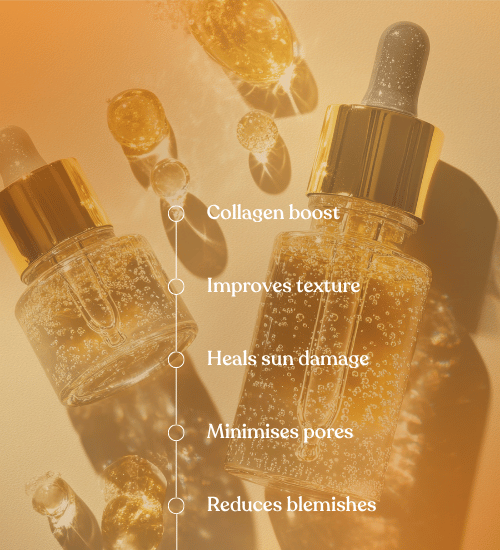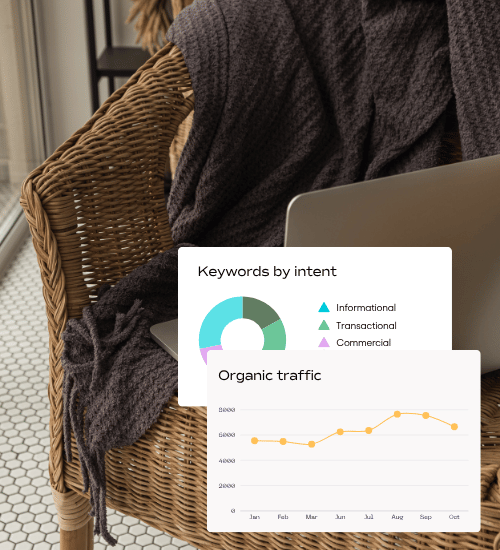
A client asked me recently how they can handle product descriptions when the only difference between products is something like size. Let’s take tiles that all have the same finish, colour and material, but are listed individually as 10mm, 20mm, 30mm, and so on.
Do identical product descriptions cause duplicate content issues?
It’s something I see in ecommerce (and it’s not exclusive to a single platform) a lot: the same product, sold in different sizes or dimensions, but set up as completely separate products in the store. And when that happens, the product descriptions naturally end up being identical.
Because… well, essentially, they’re the same product.
You can only describe a tile, candle, paint colour, fabric, or screw so many ways before you start losing the will to live. And this is usually the moment someone starts worrying about duplicate content or a Google penalty and it usually comes with that vague fear of doing something “wrong” with SEO.
What Google tries to do is avoid indexing multiple pages that are essentially the same. It looks at similarity, intent, structure, internal linking and signals like:
- Which product has stronger relevance?
- Which product gets linked to more?
- Which product is best for this search query?
If the pages are too similar, Google usually picks one to treat as the primary page, and the others are either filtered out, or clustered as near-duplicates. Sometimes, the weaker page is de-indexed.
This is where canonical tags become important to SEO.
What are canonical tags?
A canonical tag is basically you telling Google that other pages on your website are similar to this page, but this one is the primary version. Don’t de-index the others, but prioritise this page.
So if you have multiple pages (not just products and categories) that are nearly identical, you can (and should) use canonical tags to signal which version is the “main” one. This prevents your pages from competing against each other in search.
It’s not about avoiding punishment. It’s about avoiding dilution.
If you don’t canonicalise, Google has to guess. And it may not guess the page you would choose.
Once that is handled, you’re no longer worrying about duplicate content penalties, because those don’t exist here. You’re managing indexation strategy.
Do you still need unique content with canonicals?
Once the canonical signals are in place, you do not have to rewrite every product description just for SEO. If the products are genuinely the same and you’ve signalled which one is the primary version, Google will understand the relationship and won’t treat the duplicates as a problem.
The bigger decision is structural. Does the size (or other subtle difference, like colour or finish) variation influence how someone chooses or uses the product? If not, then these products can (and probably should) be grouped as variants within a single product page.
This consolidates:
- One strong URL (instead of multiple weaker ones)
- One set of customer reviews
- One place to maintain content
- One clean user journey
- One clear canonical focus for Google
That said, it’s not uncommon for brands to separate their products by a single attribute. Reasons for this approach include the illusion of a bigger catalogue, better filtering, and if they already have unique product descriptions for those products. One of the websites that springs to mind is Yours. They have separate SKUs for each variation, like a dress that comes in separate colours and prints.
Hey, even the Shopify theme store has gone down this route – their theme presets are listed individually.

The Florona Shopify theme is a fitting example of product grouping.
Tips for writing unique product descriptions
You can keep the core description identical, but here’s where to be unique.
If you have canonical tags pointing to your primary product page for this product group, Google already understands which page holds authority. So the goal isn’t to make every description different for the sake of it — the goal is to make differences easier to understand.
Instead of rewriting paragraphs, just add clarity where it matters:
- Product title: Make size, finish and range consistent.
- Short summary: 1-2 lines about best use scenario.
- Suitability notes: Where this size is most practical.
- Specs: Dimensions, coverage, thickness – clearly tabled.
- Comparison chart: Ideally across all sizes on each page.
This gives each page a purpose, without inventing 27 new ways to say “matte glazed porcelain.”
Benefits of writing unique product descriptions
Even though canonicals prevent SEO competition, a little uniqueness helps with:
- Better click-through rates: The right page appears for the right query.
- Clearer relevance signals: Google understands which variation answers which search.
- Faster customer decisions: Less hesitation, fewer returns.
- Fewer pre-sale questions: Support team breathes a sigh of relief!
- Improved onsite search performance: Variant queries match more cleanly.
So yes, canonicals stop the SEO problem, but clarity stops the user problem.
Examples of unique product descriptions
I’ll give an example I’ve seen lately when I’ve been researching supplements for elderly dogs with arthritis and other joint stiffness. There’s different forms of the product, like chews, tablets and powder.
Core description (same across all products)
This supplement supports joint mobility and everyday comfort in active, aging, or large-breed dogs. Formulated with glucosamine, chondroitin, and turmeric to help maintain healthy cartilage and reduce stiffness after exercise. Designed for long-term daily support.
Now we differentiate just the parts that matter.
Chew version
This soft, tasty chewable supplement supports every day joint mobility and comfort in active, aging, or large-breed dogs. It’s formulated with glucosamine, chondroitin, and turmeric to help maintain healthy cartilage and reduce stiffness after exercise. Great for dogs who just love their chewy treats.
Capsule version
This capsule version of the supplement is ideal for non-fussy dogs! It supports joint mobility and everyday comfort in active, aging, or large-breed dogs. Formulated with glucosamine, chondroitin, and turmeric to help maintain healthy cartilage and reduce stiffness after exercise. Designed for long-term support.
Powder version
This versatile version of the supplement is great for mixing with water or just a sprinkling at mealtimes. It supports healthy joints and comfort in active, aging, or large-breed dogs. Formulated with glucosamine, chondroitin, and turmeric. to help maintain healthy cartilage and reduce stiffness after exercise.
With just a few additions and switching around key features in the description, it has a unique spin to it and still feels natural. This needn’t be a race to the top either, work in batches. Starting with high-traffic product pages will give you the most data when checking for changes in performance.
Looking for help with your product descriptions?
I lead our SEO support services at Absolute Design and we’re taking on new clients. If this is something you’re dealing with on your store, we can look at it together and work out the cleanest approach for SEO.
Send me an email and we’ll go from there.




